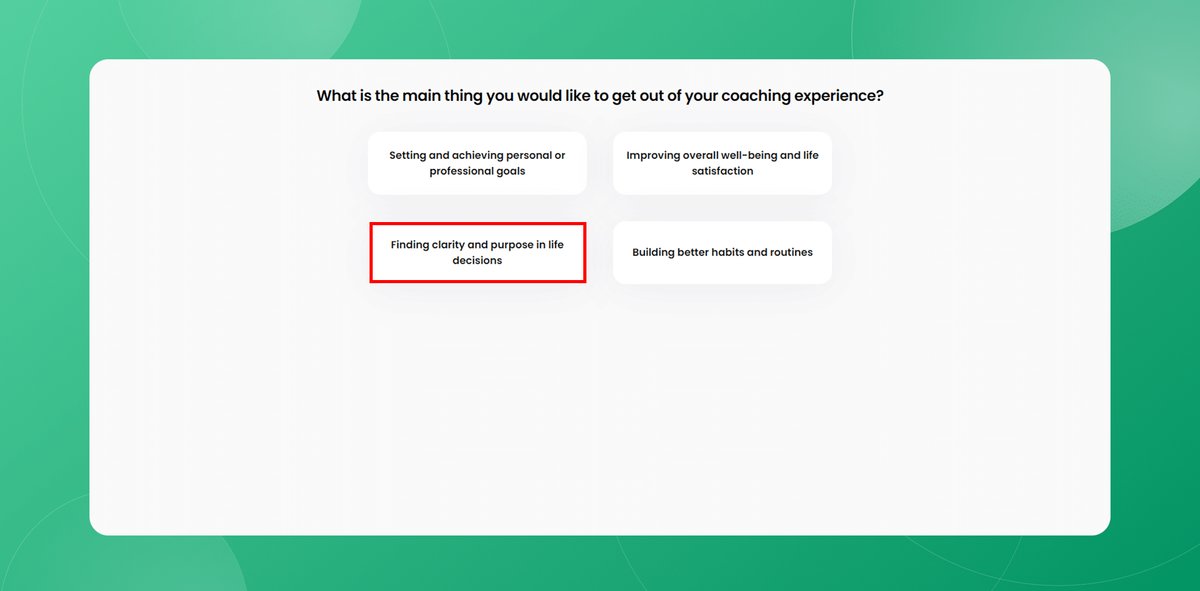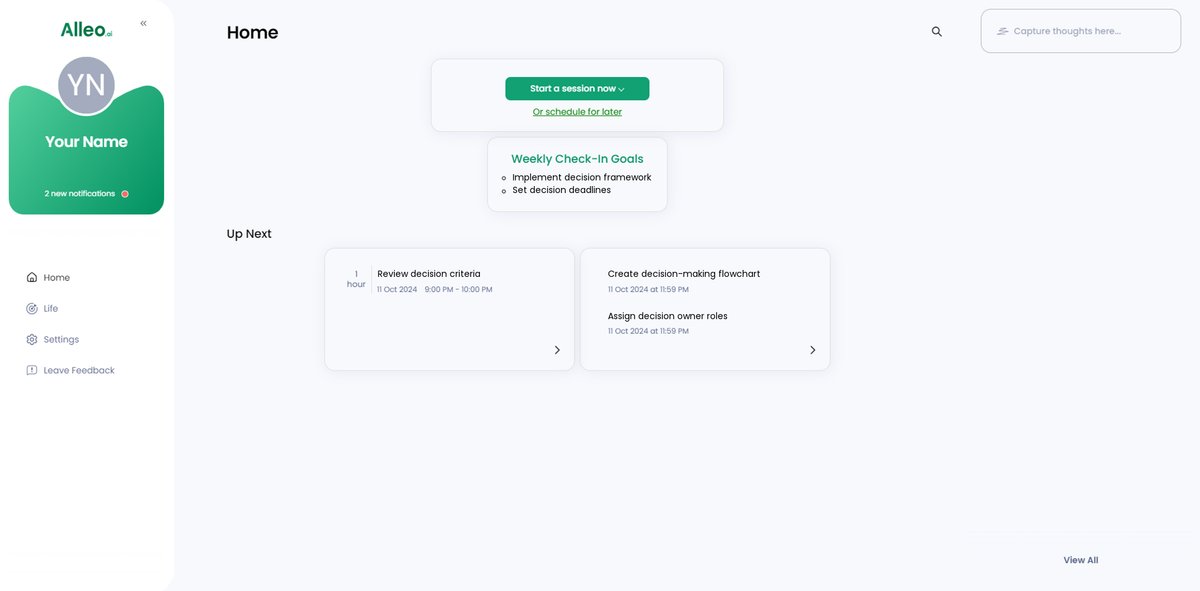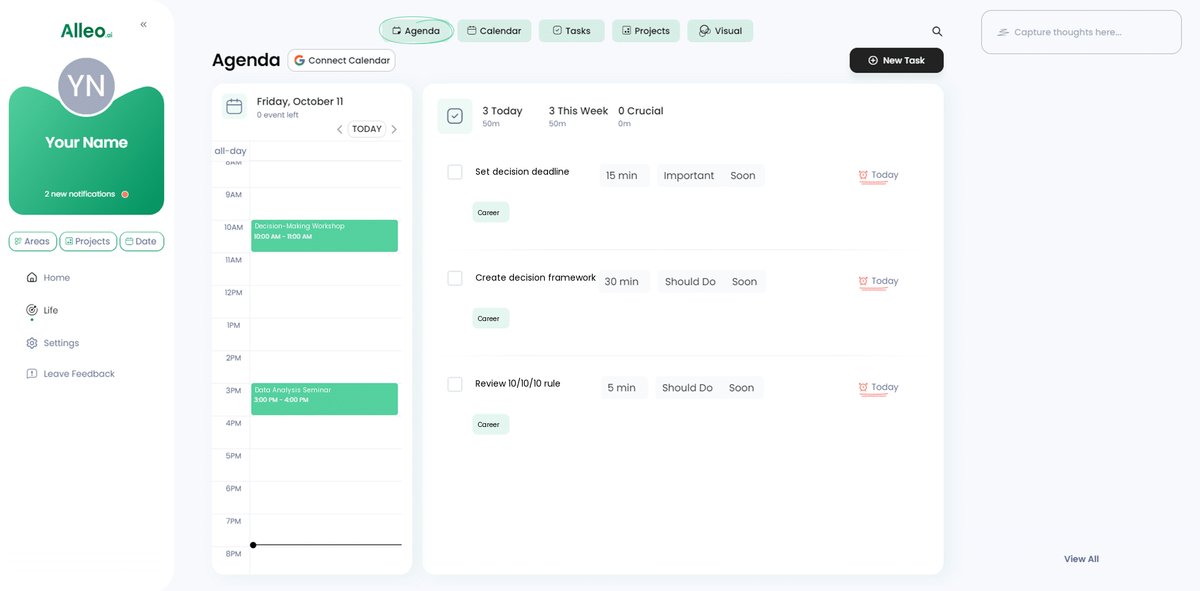7 Powerful Steps for Business Leaders to Balance Analysis Paralysis and Quick Action
Are you struggling to make timely decisions despite having all the necessary information? Overcoming analysis paralysis in business is a common challenge for many professionals.
As a life coach, I’ve helped many professionals navigate these challenges. In my experience, corporate executives often face immense pressure to balance thorough analysis with the need for quick action. Effective time management for business leaders is crucial in these situations.
In this article, you’ll discover actionable strategies to overcome analysis paralysis and make decisions swiftly. We’ll explore tools, frameworks, and mindset shifts tailored for business leaders, including decision-making strategies for executives and rapid decision-making techniques for CEOs. These approaches will help you balance thoroughness and speed in management.
Let’s dive in to explore how overcoming analysis paralysis in leadership can improve your business performance.

The High Cost of Delayed Decisions
Let’s face it: analysis paralysis can cripple your business. Many executives find themselves stuck, unable to move forward despite having all the necessary data. Overcoming analysis paralysis in business is crucial for maintaining momentum.
I’ve seen businesses miss out on crucial opportunities because decisions were delayed, highlighting the importance of effective time management for business leaders.
A real-life example is a company that lost its competitive edge by over-analyzing market trends. This hesitation allowed competitors to swoop in and capture the market share, demonstrating the need for leadership agility and quick action.
The impact? Missed opportunities, decreased team morale, and a loss of competitive advantage. These consequences underscore the importance of rapid decision-making techniques for CEOs.
In my experience, these problems are more common than you might think. The pressure to make the perfect decision can paralyze even the most seasoned leaders, emphasizing the need for overcoming analysis paralysis in leadership.
This is why it’s critical to balance thorough analysis with timely action, incorporating data-driven decision-making in business while also recognizing the role of intuition vs. data analysis in leadership choices.

Roadmap to Balancing Analysis and Action
Overcoming analysis paralysis in business requires focused steps. Here are the main areas to focus on to make progress:
- Implement a Decision-Making Framework: Create a structured process and use models like SWOT analysis to enhance decision-making strategies for executives.
- Set Clear Decision Deadlines: Assign deadlines and ensure accountability for critical decisions, a key aspect of overcoming analysis paralysis in leadership.
- Practice the 10/10/10 Rule for Decisions: Consider decisions’ impacts in 10 minutes, 10 months, and 10 years, a rapid decision-making technique for CEOs.
- Use Data-Driven Insights for Quicker Choices: Implement real-time analytics tools for instant insights, promoting data-driven decision-making in business.
- Adopt a “Thoughtful Action” Mindset: Balance urgency with reflection and encourage calculated risk-taking, fostering leadership agility and quick action.
- Establish a Rapid Prototyping Approach: Create small-scale prototypes to test ideas quickly, aiding in risk assessment in fast-paced business environments.
- Cultivate Decisiveness Through Small Choices: Encourage quick, daily decisions and reflect on outcomes, balancing thoroughness and speed in management.
Let’s dive in!
1: Implement a decision-making framework
In today’s fast-paced business environment, implementing a decision-making framework is crucial for balancing thorough analysis with quick action and overcoming analysis paralysis in business.
Actionable Steps:
- Establish criteria for decision-making: Define clear criteria to evaluate options, ensuring alignment with organizational goals and values, and support rapid decision-making techniques for CEOs.
- Define roles and responsibilities: Assign specific roles within the team, ensuring accountability and clarity in the decision-making process, enhancing leadership agility and quick action.
- Use decision-making models: Select and apply models like SWOT analysis or decision trees that fit your organizational needs and context, facilitating data-driven decision-making in business.
Explanation:
These steps are essential for creating a structured and effective decision-making process. Defining criteria and roles ensures that decisions are made consistently and efficiently, helping in overcoming analysis paralysis in leadership.
Using established models helps streamline complex decisions. According to IESE Business School, using decision-making models can help family firms address critical issues during rapid changes or crises, supporting decision-making strategies for executives.
Key benefits of implementing a decision-making framework:
- Improves consistency in decision-making across the organization
- Reduces decision fatigue and analysis paralysis
- Enhances alignment with strategic objectives and supports effective time management for business leaders
Taking these steps will make your decision-making process more efficient and aligned with your strategic goals, balancing thoroughness and speed in management.

2: Set clear decision deadlines
Setting clear decision deadlines is essential for maintaining momentum and avoiding prolonged indecision, which is crucial in overcoming analysis paralysis in business.
Actionable Steps:
- Assign deadlines to critical decisions: Use project management tools to track deadlines and ensure accountability by assigning a decision owner, promoting leadership agility and quick action.
- Implement a deadline review process: Regularly review and adjust deadlines as necessary. Encourage timely feedback and updates from team members to support rapid decision-making techniques for CEOs.
Explanation:
These steps help ensure that decisions are made promptly and efficiently, balancing thoroughness and speed in management. Assigning deadlines and reviewing them regularly keeps the team focused and accountable, supporting effective time management for business leaders.
According to David Lancefield, maintaining clear deadlines and accountability is vital for effective leadership and decision-making strategies for executives.
Clear deadlines keep your team on track and prevent delays in critical projects, helping to overcome analysis paralysis in leadership.

3: Practice the 10/10/10 rule for decisions
Practicing the 10/10/10 rule helps business leaders assess the long-term impact of their decisions, aiding in overcoming analysis paralysis in business.
Actionable Steps:
- Evaluate immediate impact: Consider how the decision will affect your team and business in the next 10 minutes, focusing on rapid decision-making techniques for CEOs.
- Assess short-term consequences: Reflect on how the decision will influence your operations and goals in the next 10 months, balancing thoroughness and speed in management.
- Consider long-term outcomes: Think about the potential effects of the decision over the next 10 years, incorporating data-driven decision-making in business.
Explanation:
These steps ensure a comprehensive evaluation of decisions, balancing short-term needs with long-term goals, essential for overcoming analysis paralysis in leadership.
By using this rule, leaders can avoid hasty choices that might seem beneficial now but could be detrimental later, demonstrating leadership agility and quick action.
According to Red Slice, practicing transparency and clear decision-making builds trust and improves team morale.
Applying the 10/10/10 rule helps you make well-rounded decisions that support sustainable business growth and effective time management for business leaders.
4: Use data-driven insights for quicker choices
Incorporating data-driven insights allows business leaders to make informed decisions swiftly, helping in overcoming analysis paralysis in business.
Actionable Steps:
- Implement real-time analytics tools: Deploy tools like Power BI, Tableau, or Google Data Studio for instant insights, enhancing data-driven decision-making in business.
- Train your team on data interpretation: Conduct workshops to help team members read and utilize data effectively, improving leadership agility and quick action.
Explanation:
These steps ensure that decisions are based on accurate data and insights. Real-time analytics tools provide up-to-date information, facilitating quick yet informed choices, which is crucial for overcoming analysis paralysis in leadership.
According to Silicon Valley Center, using predictive analytics aids in anticipating market changes, keeping you ahead of competitors and supporting rapid decision-making techniques for CEOs.
Implementing these strategies will help you leverage data for faster, more effective decision-making, balancing thoroughness and speed in management.

5: Adopt a “thoughtful action” mindset
Adopting a “thoughtful action” mindset is crucial for balancing urgency with reflection and making strategic decisions, especially when overcoming analysis paralysis in business.
Actionable Steps:
- Schedule intentional pauses: Set aside time to reflect on important decisions before taking action, a key strategy for effective time management for business leaders.
- Encourage calculated risk-taking: Promote a culture that values thoughtful experimentation and learning from outcomes, essential for risk assessment in fast-paced business environments.
Explanation:
These steps ensure decisions are well-considered yet timely, aiding in overcoming analysis paralysis in leadership. Scheduling pauses helps avoid hasty choices, while embracing calculated risks fosters innovation and supports rapid decision-making techniques for CEOs.
According to The Caring Techie, balancing urgency with reflection leads to more strategic and effective decision-making.
Key elements of a “thoughtful action” mindset:
- Balancing quick action with careful consideration, crucial for leadership agility and quick action
- Embracing calculated risks for innovation, a vital aspect of decision-making strategies for executives
- Learning from both successes and failures, essential in data-driven decision-making in business
Taking these steps helps maintain a balance between action and contemplation in your decision-making process, effectively balancing thoroughness and speed in management.

6: Establish a rapid prototyping approach
Establishing a rapid prototyping approach allows business leaders to test ideas quickly and iterate based on feedback, helping in overcoming analysis paralysis in business.
Actionable Steps:
- Create small-scale prototypes: Develop initial versions of new initiatives to test concepts quickly and gather immediate feedback, supporting rapid decision-making techniques for CEOs.
- Gather and analyze feedback: Use feedback loops to refine and improve prototypes continuously, enhancing data-driven decision-making in business.
- Iterate based on insights: Make adjustments to prototypes based on the collected data and insights, demonstrating leadership agility and quick action.
Explanation:
These steps help ensure that you can validate ideas swiftly and make necessary adjustments before full-scale implementation. Rapid prototyping minimizes risks and allows for agile responses to market changes, balancing thoroughness and speed in management.
According to the Silicon Valley Center, adopting a real-time adaptability approach helps businesses stay ahead in a shifting market.
This approach will empower your team to innovate efficiently while reducing the fear of making wrong decisions, effectively overcoming analysis paralysis in leadership.

7: Cultivate decisiveness through small choices
Cultivating decisiveness through small choices helps build confidence and agility in decision-making, which is crucial for overcoming analysis paralysis in business.
Actionable Steps:
- Make daily decisions quickly: Encourage team members to make small, low-stakes decisions within a set time frame to build confidence and practice rapid decision-making techniques for CEOs.
- Reflect on decision outcomes: Hold brief debriefs to discuss the results of these decisions and learn from the outcomes, fostering data-driven decision-making in business.
- Celebrate quick decisions: Recognize and reward team members who make timely decisions to reinforce this behavior and promote leadership agility and quick action.
Explanation:
These steps matter because they help build a culture of decisiveness and confidence in your team. By making small decisions quickly, your team can develop a habit of timely decision-making, essential for overcoming analysis paralysis in leadership.
Reflecting on outcomes provides valuable learning opportunities. According to Red Slice, practicing transparency and clear decision-making builds trust and improves team morale, which is crucial for effective time management for business leaders.
Benefits of cultivating decisiveness:
- Builds confidence in decision-making abilities
- Improves overall team agility and responsiveness
- Creates a culture of action and accountability
Implementing these strategies will create a more decisive and agile organization, ready to seize opportunities and overcome analysis paralysis in business environments.

Partner with Alleo to Overcome Analysis Paralysis
We’ve explored the challenges of balancing analysis paralysis and quick action in business. Solving them can transform your leadership effectiveness and improve decision-making strategies for executives.
Did you know you can work directly with Alleo to make this journey easier and enhance your leadership agility and quick action?
Alleo’s AI coach provides tailored support for overcoming analysis paralysis in leadership. Set up an account and create a personalized plan for data-driven decision-making in business.
The coach will follow up on your progress in rapid decision-making techniques for CEOs. They’ll handle changes and keep you accountable via text and push notifications, helping you balance thoroughness and speed in management.
Ready to get started for free? Let me show you how to overcome analysis paralysis in business!
Step 1: Log In or Create Your Account
To start overcoming analysis paralysis with Alleo’s AI coach, log in to your account or create a new one to begin your journey towards more efficient decision-making.

Step 2: Choose Your Decision-Making Focus
Select “Finding clarity and purpose in life decisions” to tackle your analysis paralysis head-on, empowering you to make confident choices aligned with your personal and professional goals.

Step 3: Select “Career” as Your Focus Area
Choose “Career” as your focus area to address decision-making challenges in your professional life, aligning with the strategies discussed for overcoming analysis paralysis and improving leadership effectiveness.

Step 4: Starting a coaching session
Begin your journey with an intake session to create a personalized plan for overcoming analysis paralysis and improving your decision-making skills.

Step 5: Viewing and managing goals after the session
After your coaching session, check the app’s home page to review and manage the goals you discussed, ensuring you stay on track with your decision-making improvements.

Step 6: Adding events to your calendar or app
Track your progress in overcoming analysis paralysis by adding key decision deadlines and action items to your calendar or task list within the Alleo app, allowing you to monitor your journey towards more efficient decision-making.

Bringing It All Together: Action and Analysis in Harmony
We’ve explored how to balance thorough analysis with timely action, key to overcoming analysis paralysis in business. Now, it’s time to put these strategies into practice.
Remember, analysis paralysis can cripple your business. But with the right decision-making strategies for executives, you can make choices swiftly and confidently.
Implement frameworks, set deadlines, and use data-driven decision-making in business. Adopt a thoughtful action mindset and encourage rapid decision-making techniques for CEOs.
Cultivate decisiveness through small choices, enhancing leadership agility and quick action.
Empower yourself and your team to overcome indecision and analysis paralysis in leadership. You’re not alone in this journey.
Alleo is here to support you in balancing thoroughness and speed in management. Try it for free and see the difference it makes.
Your future decisions will thank you.